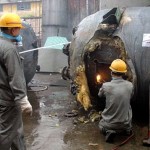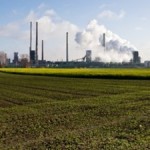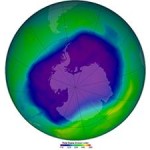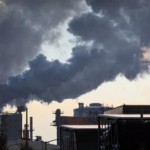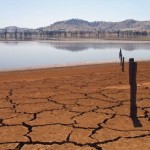
Nairobi / Geneva – The Earth’s protective ozone layer is well on track to recovery in the next few decades, thanks to concerted international action against ozone depleting substances, according to a new assessment by 300 scientists.
The Assessment for Decision-Makers, a summary document of the Scientific Assessment of Ozone Depletion 2014, is being published by the United Nations Environment Programme (UNEP) and the World Meteorological Organization (WMO), and is the first comprehensive update in four years.
The stratospheric ozone layer, a fragile shield of gas, protects the Earth from harmful ultraviolet rays of the sun. Without the Montreal Protocol and associated agreements, atmospheric levels of ozone depleting substances could have increased ten-fold by 2050. According to global models, the Protocol will have prevented 2 million cases of skin cancer annually by 2030, averted damage to human eyes and immune systems, and protected wildlife and agriculture, according to UNEP.
The phase-out of ozone depleting substances has had a positive spin-off for the global climate because many of these substances are also potent greenhouse gases. However, the assessment report cautions that the rapid increase in certain substitutes, which are themselves also potent greenhouse gases, has the potential to undermine these gains. The assessment also notes that there are possible approaches to avoiding the harmful climate effects of these substitutes.
“There are positive indications that the ozone layer is on track to recovery towards the middle of the century. The Montreal Protocol – one of the world’s most successful environmental treaties – has protected the stratospheric ozone layer and avoided enhanced UV radiation reaching the earth’s surface,” said UN Under-Secretary-General and UNEP Executive Director Achim Steiner.
“However, the challenges that we face are still huge. The success of the Montreal Protocol should encourage further action not only on the protection and recovery of the ozone layer but also on climate. On September 23, the UN Secretary General will host Heads of State in New York in an effort to catalyse global action on climate. The Montreal Protocol community, with its tangible achievements, is in a position to provide strong evidence that global cooperation and concerted action are the key ingredients to secure the protection of our global commons,” he added.
“International action on the ozone layer is a major environmental success story,” said WMO Secretary-General Michel Jarraud. “This should encourage us to display the same level of urgency and unity to tackle the even greater challenge of climate change. This latest assessment provides solid science to policy-makers about the intricate relationship between ozone and climate and the need for mutually-supportive measures to protect life on earth for future generations.”
“Human activities will continue to change the composition of the atmosphere. WMO’s Global Atmosphere Watch programme will therefore continue its crucial monitoring, research and assessment activities to provide scientific data needed to understand and ultimately predict environmental changes, as it has done for the past 25 years,” said Mr. Jarraud.
Key Findings
Actions taken under the Montreal Protocol on Substances that Deplete the Ozone Layer are enabling the return of the ozone layer to benchmark 1980 levels.
- Under full compliance with the Montreal Protocol, the ozone layer is expected to recover to 1980 benchmark levels – the time before significant ozone layer depletion – before the middle of the century in mid-latitudes and the Arctic, and somewhat later in the Antarctic.
- The Montreal Protocol and associated agreements have led to decreases in the atmospheric abundance of gases, such as CFCs (chlorofluorocarbons) and halons, once used in products such as refrigerators, spray cans, insulation foam and fire suppression.
- Total column ozone declined over most of the globe during the 1980s and early 1990s. It has remained relatively unchanged since 2000, but there are recent indications of its future recovery.
- The Antarctic ozone hole continues to occur each spring and it is expected to continue occurring for the better part of this century given that ozone depleting substances persist in the atmosphere, even though their emissions have ceased.
- The Arctic stratosphere in winter/spring 2011 was particularly cold, which led to large ozone depletion as expected under these conditions.

